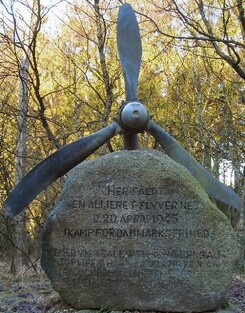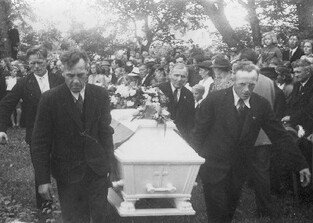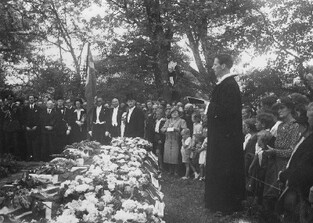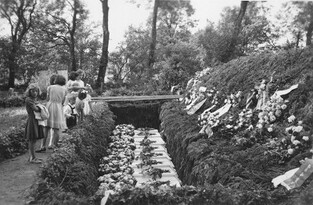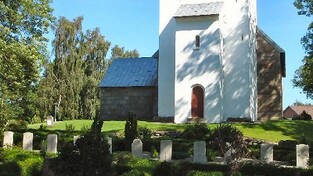- Home
- About The Project
- About The Author
- Latest additions to the project
- Operation BULBASKET
- Oradour-Sur-Glane Massacre 10 June 1944
- British Normandy Memorial
- John Northend - The Inspiration
- Lancaster W4192 "QR-E" 61 Squadron RAF
- The Cemeteries; UK, Ireland and European mini-tour
- Aarestrup Kirke, Denmark
- Aarestrup Kirke - Loss of Liberator KH410
- Aarhus Vestre Cemetery, Denmark
- Arnhem Oosterbeek Cemetery, Holland
- Basingstoke, Wortley Road Cemetery
- Bayeux War Cemetery, France
- Church Of Ireland Churchyard, Belturbet, Republic of Ireland
- Bergen-Op-Zoom, Netherlands
- Bretteville-sur-Laize Canadian War Cemetery
- Brookwood Military Cemeteries
- Cambridge American Cemetery
- Cranwell, St Andrews Parish Church
- D-Day Gold Beach - Remnants of Mulberry Harbour
- Deutsche Soldatenfriedhof, Cannock Chase
- Deutsche Soldatendfriedhof La Cambe, Normandy
- Dunkirk Town Cemetery, France
- Enniskillen Roman Catholic Cemetery
- Escoublac-La Baule War Cemetery St Nazaire
- HAMEL MILITARY CEMETERY, Somme Department, Northern France
- Harefield St Mary's ANZAC Cemetery
- Royal Victoria Hospital Netley and Military Cemetery, Southampton
- Nijmegen Jonkerbos War Cemetery
- Northwood Cemetery
- Odense Assistens Cemetery, Denmark
- Poperinghe New Military Cemetery, Belgium
- Ranville Churchyard, France
- Ration Farm Cemetery, Chapelle D'Armentieres, France
- Reichswald British War Cemetery, Germany
- Runnymede Commonwealth Air Forces Memorial
- Scopwick Burial Ground, Scopwick, Lincolnshire
- Sleaford Cemetery
- Sainte Marè Église
- CWGC Eyes On, Hands On Volunteer Programme
- Biography Flight Sergeant Eleanor Maud Barker WAAF
- Biography Commandant Roger Baudoin French Foreign Legion
- Biography Trooper George Sydney Herbert Biffin B Sqn 1 SAS
- Biography Lance Sergeant Charles Frederick Bristow GM RE
- Biography Lt HD Brotheridge Ox & Bucks Light Infantry
- Biography Lieutenant W H England No 48 RM Commando
- Buffalo LVT 'Conqueror' destroyed at Walcheren.
- Biography Pilot Officer Emil Fechtner RAF (Czech)
- Biography Private Oswald Fisher 2nd RM Bn, RN Division, RMLI 1916
- Biography Lt Col J G Fitzmaurice MC Royal Tank Regiment
- Biography Flight Sergeant Josef František DFM* RAF
- Biography Sergeant Pietro Alfredo Giovetti RAFVR
- Biography Lieutenant John Grayburn VC, 2 Para
- Biography Lt Cdr Nicodeme Guilonard Netherlands Navy
- Biography Major The Viscount Arthur Onslow Edward Guinness, Viscount Elveden.
- Biography Captain PH Haydon DSO No. 41 RM Commando
- Biography Private Owen Hooper, The Buffs & 4 Commando
- Biography Lieutenant Joseph Patrick Kennedy Jr. US Navy
- Biography Flight Lieutenant DSA Lord VC RAF
- Biography Major Robert Reid Maitland MB CHB RAMC
- Biography Wg Cdr Jaroslav Maly RAF
- Biography Lieutenant Colonel William McDowell DSO BSc RE
- Biography Flying Officer Geoff Adrian Mombrun RAFVR
- Biography Marine Byron Moses No. 41 RM Commando
- Biography Flying Officer J E Northend RAFVR
- Biography Group Captain 'Bobby' Oxspring DFC** AFC RAF
- Biography FO Ludwik Witold Paszkiewicz DFC RAF
- Biography Lieutenant HE 'Jimmy' Pearson MC The Reconnaissance Corps
- Biography Rifleman Frank Pennefather, 3rd NZ Rifle Brigade
- Biography Sergeant Robert John "Jack" Preece, 61 Squadron RAF.
- Biography Lieutenant John Richard Priestley The Rifle Brigade
- Biography Staff Sjt Christopher Robinson Glider Pilot Regt., AAC
- Biography Private AMB Roozeboom No 10 (I-A) Cdo
- Biography Sepoy Mahrup (Mahruf) Shah 129th Duke of Connaught's Own Baluchis
- Biography Flying Officer Burrell AT Soundy RNZAF
- Biography Private James Stokes VC 2nd Bn KSLI
- Biography Lieutenant Colonel Leon Robert ‘Bob’ Vance, US Army Air Force
- Taking Chance. The importance of remembrance.
- Useful Links- Museums and Websites
- MA FINAL PROJECT
Lieutenant Commander Nicodeme “Nic” Guilonard, Royal Netherlands Navy
|
Rank |
Luitenant ter Zee 1ste Klasse (Lieutenant Commander) |
|
Name & Decorations |
Nicodeme “Nic” Guilonard |
|
Service |
Royal Netherlands Navy |
|
Unit |
No 206 Squadron RAF |
|
Attached To |
RAF Coastal Command |
|
Operation |
Anti-submarine patrol in the Kattegat |
|
Date of Death |
00:20 hours 21st April 1945 |
|
Place of Death |
Nørland Forest near Aarestrup, Denmark |
|
Circumstances |
Aircraft crashed, all crew killed instantly. |
|
Age |
40 (born 9th June 1904 Brielle, The Netherlands) |
|
Buried or Commemorated at |
Aarestrup Churchyard, Aarestrup, Denmark |
|
Grave or Memorial Number |
Grave 709 |
The story behind Flyverstenen in Torstedlund Forest – in brief
Compiled and edited by Niels Norgaard Nielsen
Local History Archive for the former Stovring Municipality
Wedding party at "Højvang" near Aarestrup
On Friday 20 April 1945, a wedding party was held at "Højvang" for his daughter Ella Søndergaard Jensen and farmer Lars Christensen from Rødstrup near Vokslev. The wedding dinner withApproximately 150 participants were eaten in the barn. Later, at midnight, when they had a midnight snack, Andreas Søndergaard came in and said that "apparently an airplane had fallen down in the woods, for it burned, shot, smashed and struck stars and smoke thickly far east from the place". You could
clearly see the smoke in the moonlit night.
Other witnesses, both from Aarestrup and around Nørlund, have since stated that when they had errand out at this late hour, in the moonlit night, saw a plane crash burning over Torstedlund Forest, and that they had also heard gunshots and the violent bangs when the plane The crash exploded Background to the plane crash.
In March 1945, a few months before the end of World War II, the Allies became aware that the Germans were in the process of sailing half a hundred barely completed U-boats to Norway, where the bomb-proof, concrete-cast submarine bases in Horten and Bergen were supposed to be completely finished and equipped for battle. The Allied response was to seek a halt to these voyages.
On Friday, 20th April, two Liberator B-24 bombers belonging to the 206th Squadron took off from the RAF Coastal Command base RAF Leuchars near Dundee. One with the hallmark N/206 took off at 20:11 and the other with the hallmark L/206 at 20:48. L/206 performed her task and safely returned to its base 0618 the next morning. Possibly this plane hit a submarine. The machine with N/206 took off first, but never made it home. Its flight time indicates that it has flown over the Skagerrak and Kattegat before the crash In the squadron's journal, it is laconically stated that "The machine didn't come back No signals received" It is the responsibility of this machine and its crew tragic end, this story is about.
Its highly experienced crew, most of which had flown together for almost a year, was known at the base as "The flying League of Nations", then it consisted of four Englishmen, two Welsh, two Canadians, one New Zealander, an Australian
and a Dutchman, the first pilot Nicodéme Guilonard, who took over command of plane in January 1945.
147167 Luitenant ter Zee 1ste Klasse (Lieutenant Commander)
Royal Netherlands Navy
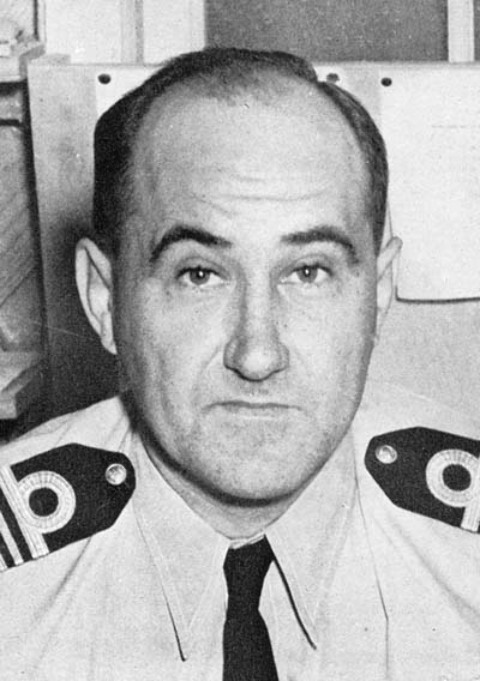
Information provided by Niels Norgaard Nielsen who was researching a Liberator crash in Denmark. It turned out that the pilot of that Liberator was Nicodeme Guilonard who was part of 206 Squadron. Source https://coastalcommand206.com/pages/206-squadron-coastal-command-pilots-part-iii-john-lowe
Niels had obtained some information written by Nicodeme's wife Wilhelmina Guilonard. In summary he was born in Brielle in the Netherlands. He was originally a sailor with the Royal Netherlands Navy and joined the Royal Air Force when the Dutch Air Force was destroyed at the start of the war. In December 1943 he went to Canada to learn to fly the Liberator B24. In March 1944 he came over to the UK and joined 206 Squadron in January 1945 based in Leuchars.
B24 Liberator GR Mk VIII Serial Number KH410
20/04/1945
On the 20/04/1945 two Liberator crews had taken off from Leuchars around 8pm, one of those was captained by Guilonard and the other by F/O Elviss. F/O Eliviss' crew had spotted a U-Boat and attacked it, returning to base at 6:18am on the 21/04. Guilonard's crew were not so lucky, they failed to return and were posted as missing. It's was originally thought they were shot down by AA fire or enemy fighters, however a websites write up (airmen.dk - link at the bottom of this memoir) advises us that there were no reports of AA fire or claims from German fighters. We can therefore conclude that the Liberator may have crashed into one or more of the forest trees which was a similar fate for a Mosquito.
Guilonard's Liberator crew comprised of the following on that operation:
-
Lt Cmdr N Guilonard (147167) Pilot
-
F/O A.R.T Smith (NZ 4214135) 2nd Pilot
-
P/O G.H Topliff (Aus 419396) Navigator
-
F/O A.J Harding (153317) Navigator
-
F/O W.T.H Gale (190271) Flight Engineer
-
W/O G.C.K Long (1319712) AG
-
W/O W.W Spencer (R 110774) WOp/AG
-
W/O T.K Theaker (R 132255) AG
-
W/O K Emery (1076591) AG
-
F/S F.R Orritt (1432826) WOp Mechanic
